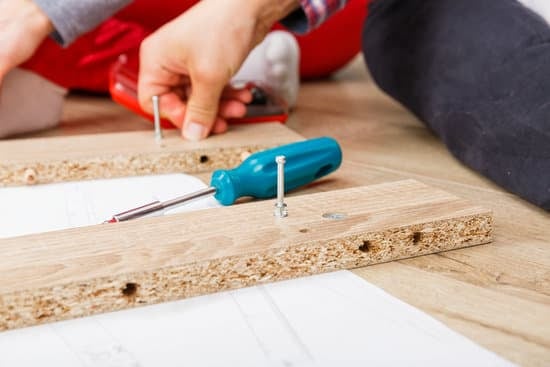Homeowners associations (HOAs) play a significant role in regulating and influencing home improvement projects. Whether it’s painting the exterior of your house, adding a deck, or installing solar panels, HOAs have guidelines and restrictions that must be followed. In this article, we will explore how homeowners associations impact home improvement projects and provide you with valuable insights on navigating their regulations effectively.
To begin, let’s understand what a homeowners association is. A homeowners association is an organization created within a residential community to establish and enforce rules and regulations for the properties within that community. Their primary purpose is to maintain the overall aesthetic appeal of the neighborhood, protect property values, and ensure a sense of consistency among the homes.
Considering the impact of homeowners associations on home improvement projects is crucial for any homeowner planning renovations or modifications. You need to understand their responsibilities and regulations before embarking on any changes to your property. By doing so, you can avoid potential conflicts with the HOA and ensure a smoother approval process for your project.
In the next sections of this article, we will delve into the reasons why homeowners associations regulate home improvement projects, common types of projects affected by HOAs, understanding their architectural review board (ARB) guidelines, tips for dealing with HOAs during the approval process, potential challenges and restrictions you may face, as well as the benefits of collaborating with your HOA. Additionally, we will highlight real-life case studies to provide practical examples and share best practices.
If you’re a homeowner considering any sort of renovation or modification to your property in a homeowners association community, this article aims to equip you with knowledge and strategies to navigate the process successfully. Let’s dive in.
Reasons why Homeowners Associations Regulate Home Improvement Projects
Homeowners associations (HOAs) play a significant role in regulating and overseeing home improvement projects within their communities. While some homeowners may view these regulations as restrictive, there are several important reasons why HOAs enforce rules and guidelines for home improvements.
Need for maintaining uniformity in the community
One of the primary reasons HOAs regulate home improvement projects is to maintain a sense of uniformity and aesthetic consistency throughout the community. By establishing guidelines for exterior changes such as paint colors, roofing materials, and landscaping, HOAs aim to create a cohesive look that enhances property values and curb appeal. This ensures that one homeowner’s personal taste or design preferences do not negatively impact the overall visual appeal of the neighborhood.
Ensuring property values are protected
HOAs have a vested interest in protecting property values within their communities. By regulating home improvement projects, they can prevent homeowners from making modifications that could potentially decrease property values.
For example, restrictions on structural modifications like adding decks or patios help ensure that these additions are done in a way that enhances, rather than detracts from, the value of homes within the community. The enforcement of these rules helps maintain confidence among homeowners that their investments will be protected over time.
Preventing excessive or incompatible modifications
Another reason why HOAs regulate home improvement projects is to prevent excessive or incompatible modifications that may disrupt the harmony of the community or infringe upon neighboring properties’ rights. By establishing guidelines on the installation of fences, sheds, or solar panels, HOAs can ensure these additions are appropriately sized and placed to avoid potential disputes among neighbors.
These regulations aim to strike a balance between allowing individual homeowners to make improvements while still considering the collective interests and wellbeing of the community as a whole.
Common Home Improvement Projects Affected by Homeowners Associations
When it comes to home improvement projects, homeowners associations (HOAs) often play a significant role in determining what is allowed and what isn’t. Understanding the common types of home improvement projects that are affected by HOA regulations can help homeowners navigate the process more effectively.
- Exterior changes: Homeowners associations typically have guidelines and restrictions when it comes to exterior changes such as painting, roofing, and landscaping. These regulations are often in place to ensure uniformity and maintain the overall aesthetic appeal of the community. Before embarking on any exterior projects, it is crucial to review the HOA’s guidelines to determine what is permissible.
- Structural modifications: Adding a deck or patio is a common home improvement project that may require approval from the HOA. Some HOAs have specific guidelines regarding size, placement, and material choice for these structures. It is essential to consult with the HOA and obtain their approval before starting any construction work.
- Installation of additional fixtures: Whether it’s installing fences, sheds, or solar panels, homeowners should be aware that their HOA may have rules and regulations regarding these additions. The HOA might have requirements in terms of height, color, or location for fences and sheds. Similarly, solar panels might need to conform to specific design standards imposed by the architectural review board (ARB) of the HOA.
Being aware of these common home improvement projects regulated by HOAs allows homeowners to plan accordingly and make informed decisions about their desired improvements.
Reviewing and Understanding the HOA’s Architectural Review Board (ARB) Guidelines
Reviewing and understanding the HOA’s Architectural Review Board (ARB) guidelines is a crucial step when undertaking home improvement projects in a homeowners association. The ARB plays a significant role in reviewing and approving projects to ensure they align with the community’s aesthetic standards and architectural guidelines. By adhering to these guidelines, homeowners can increase their chances of successfully obtaining approval for their desired improvements.
One key aspect of understanding the ARB guidelines is knowing the role of the ARB itself. The ARB is typically composed of members chosen by the homeowners association board, who are responsible for evaluating proposed changes to homes within the community. Their main objective is to maintain a cohesive appearance throughout the neighborhood while protecting property values for all residents.
To navigate the process effectively, homeowners should familiarize themselves with the specific guidelines and procedures for submitting and obtaining ARB approval. These guidelines often outline requirements such as specific materials that must be used, color schemes, architectural styles, and other relevant details. Some associations may even provide design templates or pre-approved options for certain types of modifications.
It is essential to comply with these guidelines as closely as possible when preparing project proposals to present to the ARB. Demonstrating a clear understanding of and adherence to these standards will increase the chances of obtaining approval from the board. Additionally, paying attention to any additional documents or forms that need to accompany an application is crucial in ensuring a smooth approval process.
By thoroughly reviewing and understanding the HOA’s ARB guidelines before embarking on a home improvement project, homeowners can set themselves up for success. Adhering to these guidelines demonstrates respect for community standards and can help maintain harmonious relationships between neighbors within the homeowners association.
Key Points
- Understand the role of your HOA’s Architectural Review Board (ARB) in evaluating home improvement projects.
- Familiarize yourself with specific ARB guidelines regarding materials, colors, and architectural styles.
- Ensure compliance with the ARB guidelines by submitting well-prepared and detailed project proposals.
- Pay attention to any additional paperwork or forms required for the approval process.
The Approval Process
Dealing with homeowners associations (HOAs) can be a source of frustration and complexity when it comes to home improvement projects. However, by understanding the approval process and following some key tips, homeowners can navigate through the HOA requirements more smoothly and increase the chances of obtaining approval for their desired projects.
Open communication with the HOA board is essential in ensuring a successful approval process. Before starting any home improvement project, it is important to reach out to the HOA board or architectural review board (ARB), if applicable, to understand their guidelines and requirements. This initial contact will allow homeowners to gain insight into any specific regulations or procedures that must be followed when submitting a project for approval.
Alongside open communication, understanding the timeline and paperwork requirements set by the HOA is crucial. HOAs typically have specified timeframes within which project proposals must be submitted and reviewed. By being aware of these deadlines and adhering to them, homeowners can avoid unnecessary delays or rejections. Additionally, thoroughly completing all required paperwork and providing detailed plans or drawings of the proposed project will help streamline the review process.
To present a home improvement project in a positive light to the HOA board, it is important to highlight how the project aligns with the overall aesthetic and values of the community. This can be accomplished by focusing on factors such as maintaining property values, enhancing curb appeal, or utilizing materials that are consistent with neighboring homes. Providing visual representations of the proposed changes, such as sample paint colors or architectural renderings, can also help convey your vision effectively.
Inevitably, disagreements or objections from the HOA may arise during the approval process. In these situations, it is crucial for homeowners to approach discussions in a respectful and compromise-oriented manner.
Seeking clarification on specific concerns raised by the HOA board can help find alternative solutions that may address their reservations while still meeting your project goals. Additionally, being open to suggestions or modifications proposed by the HOA can demonstrate a willingness to work collaboratively and increase the likelihood of approval.
By following these tips, homeowners can navigate the sometimes complex maze of dealing with homeowners associations during the approval process for home improvement projects. Open communication, adherence to guidelines, and a positive approach when encountering challenges will contribute to a smoother experience, ultimately leading to successful project outcomes within the guidelines of the HOA.
| Tips for Dealing with Homeowners Associations |
|---|
| 1. Open communication with the HOA board |
| 2. Understand timeline and paperwork requirements |
| 3. Present project in alignment with community values |
| 4. Be open to compromise and alternative solutions |
Potential Challenges and Restrictions with Homeowners Associations
When it comes to home improvement projects, homeowners associations (HOAs) can pose certain challenges and restrictions. While HOAs aim to maintain uniformity and protect property values, their regulations may limit the choices and options available to homeowners. Understanding these potential challenges is crucial for a successful project within the guidelines of the HOA.
One common challenge homeowners may face is the restriction on certain materials, colors, or architectural styles. HOAs often have guidelines that dictate what materials can be used in exterior modifications, such as paint colors, roofing materials, or siding. These restrictions aim to ensure consistency in the community’s aesthetic appeal but may limit homeowners’ personal preferences.
Furthermore, homeowners associations may place limitations on the size or scope of the project. This means that significant structural modifications might not be allowed or require additional approvals. For example, adding an extensive deck or patio may exceed the boundaries set by the HOA’s rules and regulations. It is essential for homeowners to familiarize themselves with these limitations before planning any major renovations.
In addition to potential design restrictions, there may also be additional costs or fees associated with obtaining HOA approvals. Some HOAs require homeowners to pay application fees when submitting their projects for review by the architectural review board (ARB). There may also be fines imposed if a homeowner fails to adhere to HOA guidelines during the construction process. Considering these potential financial implications is crucial when budgeting for a home improvement project within an HOA community.
To navigate these challenges effectively, open communication with the HOA board is of utmost importance. Homeowners should make an effort to understand the specific guidelines and procedures set forth by their HOA regarding home improvement projects. By being proactive in seeking clarification from the board or attending informational meetings, homeowners can gain insights into how best to proceed with their renovation plans.
Another strategy for dealing with potential challenges posed by HOAs is presenting your project in a positive light. This involves providing detailed plans and renderings that prove your project’s adherence to the HOA’s guidelines while highlighting the potential positive impact it may have on the community. By demonstrating how your project will enhance the aesthetics or overall value of the neighborhood, you can help overcome objections from the HOA board.
The Benefits of Homeowners Associations in Home Improvement Projects
Introduction:
Homeowners associations (HOAs) often play a significant role in home improvement projects. While some homeowners may view the influence of HOAs as restrictive, it is important to understand the benefits that come with their involvement. This section will explore the advantages of having HOAs involved in home improvement projects, highlighting how they contribute to maintaining property values, community aesthetics, and a sense of community cohesion.
Maintaining Property Values and Community Aesthetics:
One of the primary benefits of HOAs in home improvement projects is their ability to maintain property values within the community. HOAs typically have regulations and guidelines in place that ensure uniformity and consistency in exterior changes such as painting, roofing, and landscaping.
By enforcing these guidelines, HOAs actively work to prevent any decrease in property values due to excessive or incompatible modifications. This ensures that homeowners can make improvements to their homes without worrying about negatively impacting property values for themselves or their neighbors.
Ensuring a Sense of Community Cohesion and Consistency:
Another significant advantage of HOAs when it comes to home improvement projects is their role in maintaining a sense of community cohesion and consistency. HOAs often have architectural review boards (ARBs) that carefully review and approve proposed projects based on established guidelines.
These guidelines help create a cohesive aesthetic throughout the neighborhood by ensuring that all homes adhere to certain standards. By following these guidelines, homeowners are contributing to the overall visual appeal of the community while also preserving its unique character.
Access to Shared Amenities and Services:
When considering home improvement projects within an HOA, it’s important not to overlook the benefits associated with shared amenities and services provided by the association. Many HOAs offer amenities such as pools, parks, gyms, or even security services for residents.
By adhering to the guidelines set by the HOA for home improvements, homeowners can help maintain these amenities’ quality and availability for everyone in the community. Additionally, being part of an HOA grants homeowners access to services like maintenance and landscaping, which can alleviate some of the responsibilities and costs associated with home improvement projects.
Case Studies
When it comes to home improvement projects, homeowners associations (HOAs) play a significant role in regulating and approving these changes. Understanding the impact HOAs can have on your project is crucial for a successful renovation or modification. In this section, we will explore real-life case studies that highlight the influence of HOAs on home improvement projects.
One common example is the case of Sarah and John, who wanted to install solar panels on their roof. They were passionate about renewable energy and saw this as an opportunity to reduce their carbon footprint. However, their HOA had strict guidelines regarding the appearance of homes in the community, which included restrictions on visible solar panels.
Sarah and John decided to present their case to the HOA board, emphasizing the environmental benefits and long-term cost savings associated with solar panels. They also provided examples of other communities that had successfully integrated solar power. After several meetings and discussions, the HOA board agreed to modify their guidelines to allow discreetly placed solar panels, ensuring a win-win situation for both parties.
Another case study involves Mark, who wanted to build an addition onto his home. However, his HOA had limitations on the size and scope of structural modifications permitted in the community. Mark thoroughly reviewed the HOA’s architectural review guidelines and found that there was flexibility for small-scale additions under certain conditions.
He worked closely with an architect and contractor to design a modest yet functional addition that met all necessary regulations while complementing the existing aesthetics of his home. By following these guidelines and demonstrating how his project would enhance the property value without disrupting neighborhood harmony, Mark successfully obtained approval from his HOA.
These real-life examples demonstrate that working collaboratively with your HOA can lead to positive outcomes for your home improvement projects. It is essential to carefully review your HOA’s rules and regulations before embarking on any renovations or modifications.
Additionally, open communication, presenting your case effectively, and understanding the concerns and goals of your HOA can greatly increase your chances of obtaining approval. By following these best practices and learning from successful case studies, homeowners can find a balance between their desire for home improvement and the guidelines set by their HOAs.
Conclusion
In conclusion, homeowners associations play a significant role in home improvement projects. Understanding their purpose and responsibilities is crucial for any homeowner considering making changes to their property. While it may seem restrictive at times, the regulations set forth by homeowners associations aim to maintain uniformity within the community and protect property values.
When dealing with homeowners associations, it is important to familiarize yourself with their architectural review board (ARB) guidelines. These guidelines outline the procedures for submitting and obtaining approval for your project. By adhering to these guidelines, you can increase the chances of a successful outcome.
Although there may be challenges and restrictions imposed by homeowners associations, there are also undeniable benefits. Homeowners associations help maintain property values and create a cohesive aesthetic throughout the community. Additionally, they provide access to shared amenities and services that enhance the overall quality of life for residents.
In order to have a smooth home improvement project within the guidelines of the homeowners association, open communication with the HOA board is key. By understanding their timeline and paperwork requirements, you can ensure that your project progresses smoothly. It is also essential to present your project in a positive light and address any objections or disagreements from the HOA.
Frequently Asked Questions
What are the advantages and disadvantages of HOA?
Homeowners associations (HOAs) have both advantages and disadvantages. One major advantage is that they can help maintain the overall appearance and value of a neighborhood. HOAs typically enforce rules and regulations regarding property maintenance, landscaping, and architectural guidelines, which can ensure that all homes in the community meet certain standards. This can be beneficial for homeowners who want to protect their property values.
Additionally, HOAs often provide amenities such as pools, parks, or community centers, which can enhance the quality of life for residents. On the downside, some homeowners may feel that HOA rules are overly restrictive or invasive, limiting their freedom to personalize or modify their properties. Furthermore, HOA fees can be an additional financial burden on homeowners, especially if they increase over time. There is also the potential for conflicts between residents and the HOA board over enforcement of rules or decisions made by the board.
Why do HOAs have so much power?
HOAs have significant power due to legal agreements and documents that govern their operations within a community. When a homeowner purchases a property within an HOA, they typically sign a contract agreeing to abide by the association’s covenants, conditions, and restrictions (CC&R). These CC&Rs outline the rules that every homeowner must follow within the community.
If a homeowner violates these rules or fails to pay their HOA fees, the association has the authority to impose penalties or even take legal action against them. This power stems from contractual obligations established between homeowners and the association when purchasing a property in an HOA-controlled neighborhood.
What is the average HOA fee in Michigan?
The average HOA fee in Michigan varies depending on factors such as location and amenities provided by each specific association. However, according to data from 2020 compiled by RE/MAX of Southeastern Michigan Trendgraphix Reports, the median monthly HOA fee in Michigan was approximately $275. It’s important to note that this figure represents an average across multiple communities throughout the state.
Individual associations may charge higher or lower fees based on their unique circumstances. Homebuyers interested in purchasing a property within an HOA in Michigan should inquire about the specific fees associated with the community they are considering as part of their due diligence process.

I’m thrilled to have you here as a part of the Remodeling Top community. This is where my journey as an architect and remodeling enthusiast intersects with your passion for transforming houses into dream homes.





